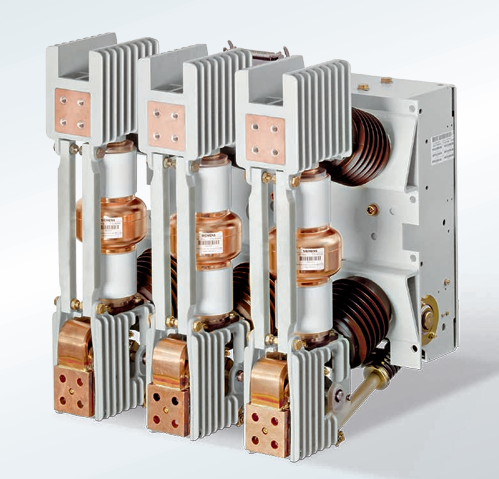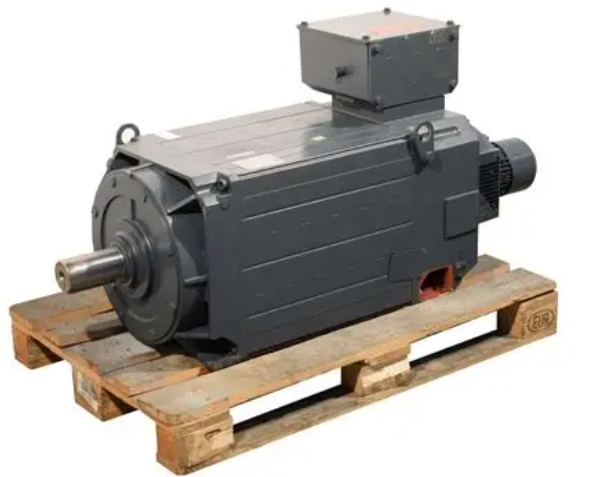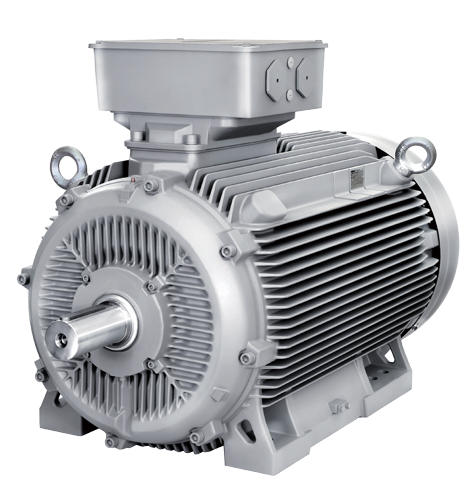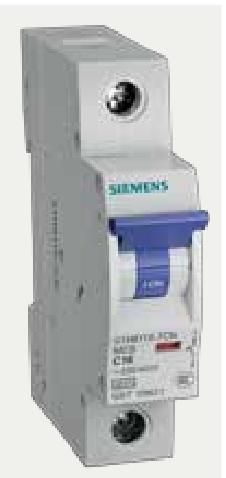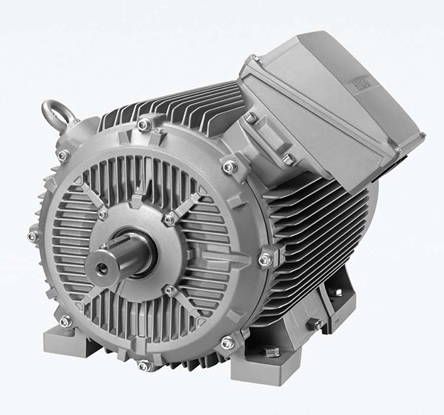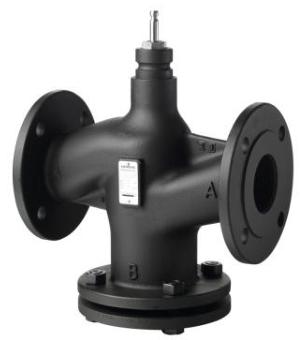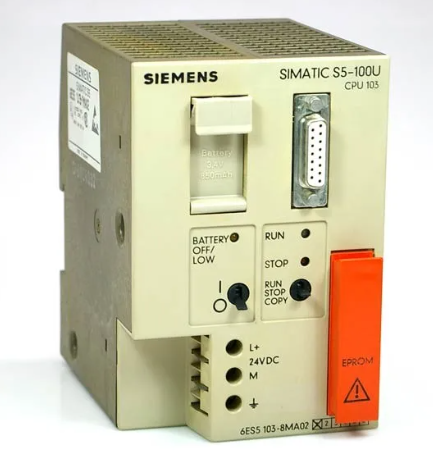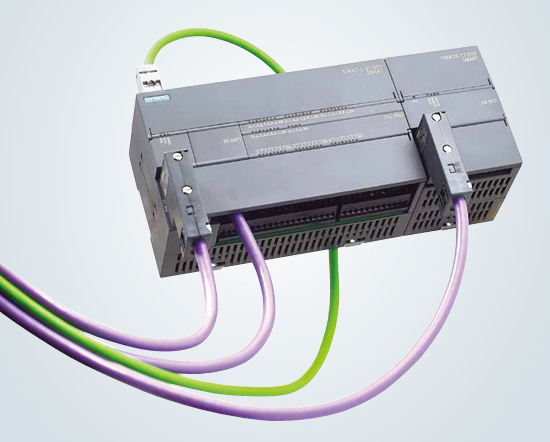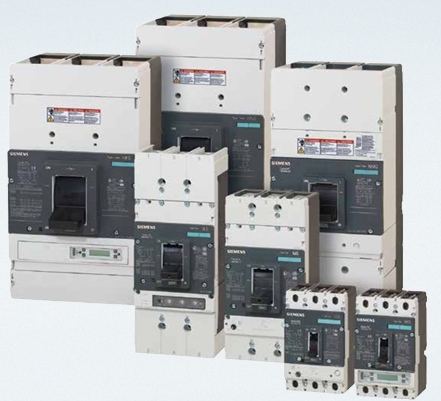GE SR489-P5-LO-A1 is a high-performance digital generator protection relay launched by General Electric (GE), designed for the safe operation of small and medium-sized synchronous generators, asynchronous generators, and phase-shifting cameras. As the "safety guard" of the generator control system, this relay integrates comprehensive protection functions, precise measurement capabilities, and flexible communication interfaces. It can monitor the real-time operation status of the generator, quickly act in case of potential faults or abnormal working conditions, cut off the fault circuit or issue alarm signals, minimize equipment damage, and avoid the expansion of accidents. It is widely used in industrial self owned power stations, distributed energy, new energy generation and other fields.
GE SR489-P5-LO-A1 Generator Protection Relay
GE SR489-P5-LO-A1 is a high-performance digital generator protection relay launched by General Electric (GE), designed for the safe operation of small and medium-sized synchronous generators, asynchronous generators, and phase-shifting cameras. As the "safety guard" of the generator control system, this relay integrates comprehensive protection functions, precise measurement capabilities, and flexible communication interfaces. It can monitor the real-time operation status of the generator, quickly act in case of potential faults or abnormal working conditions, cut off the fault circuit or issue alarm signals, minimize equipment damage, and avoid the expansion of accidents. It is widely used in industrial self owned power stations, distributed energy, new energy generation and other fields.
Core protection function
SR489-P5-LO-A1 adopts a multi criteria fusion protection mechanism, covering the main types of faults in the entire operating conditions of the generator. The protection function can be flexibly enabled or disabled according to on-site needs, and some protection parameters support custom settings to adapt to generators of different capacities and operating scenarios.
1. Short circuit fault protection
-Phase to phase short circuit protection: Based on the criteria of phase current surge and amplitude, when a phase to phase short circuit occurs in the stator winding of the generator, the relay quickly detects an abnormal increase in current and triggers a tripping action within 10ms, cutting off the connection between the generator and the power grid and preventing the short-circuit current from causing damage to the stator winding. The protection current setting can be adjusted within the range of 0.5-20Ie (Ie is the rated current of the generator), combined with the inverse time characteristic curve, to meet the protection requirements of different short-circuit current sizes.
-Grounding short circuit protection: For single-phase grounding faults in the generator stator winding, two protection modes are supported: for small resistance grounding systems, zero sequence current protection is used with a fixed value range of 0.1-10A; for ungrounded or arc suppression coil grounding systems, zero sequence voltage protection is used with a fixed value range of 1-100V. It can effectively detect grounding faults caused by winding insulation damage and avoid fault expansion and phase to phase short circuits.
2. Overload and overheat protection
-Stator overload protection: Real time monitoring of stator three-phase current. When the current continues to exceed the rated value, it automatically matches the inverse time characteristic according to the overload multiple (in accordance with IEC 60255-3 standard). An alarm signal is issued for mild overload, and a trip is triggered for severe overload. The protection setting can be set at 1.0-2.0 times the rated current of the generator, and it also has overload memory function to record the duration and maximum overload current of the overload.
-Rotor overheating protection: By monitoring the current and temperature of the rotor circuit (supporting the connection of Pt100 temperature sensors), combined with the rotor temperature rise model, it is determined whether there is a risk of overheating in the rotor. When the rotor temperature exceeds the set threshold (which can be configured within the range of 50-150 ℃) or the rotor current is overloaded for a long time, an alarm will be issued and a load reduction or trip action will be triggered according to the preset logic to prevent the rotor winding from aging or burning due to overheating.
3. Abnormal operation status protection
-Magnetic loss protection: Adopting the dual criteria of "reactive power+terminal voltage", when the excitation system of the generator fails and causes magnetic loss, the relay quickly identifies the characteristics of reactive reverse and voltage drop, and sends out alarm signals in a timely manner. If the fault persists, it triggers a trip to avoid secondary problems such as unit vibration and overcurrent caused by the generator entering asynchronous operation state. The protection action delay can be adjusted within 0.1-10 seconds to adapt to the response characteristics of different excitation systems.
-Overvoltage/undervoltage protection: Monitor the terminal voltage of the generator. When the voltage exceeds 1.15Ue (overvoltage) or falls below 0.85Ue (undervoltage) and the duration exceeds the set value, corresponding protection actions will be triggered. Overvoltage protection can prevent winding insulation from being broken down, while undervoltage protection can prevent the generator from experiencing a decrease in output or equipment from operating normally due to low voltage. The voltage setting and delay can be flexibly configured.
-Frequency anomaly protection: It has over frequency (>51.5Hz) and under frequency (<48.5Hz) protection functions. When the grid frequency or generator speed is abnormal, an alarm is first issued. If the frequency continues to be abnormal, a trip is triggered to prevent the generator from causing mechanical damage due to high speed or affecting power supply quality due to low speed. The frequency setting and action delay support custom settings, adapting to the frequency requirements of different power grids.
4. Other characteristic protections
-Reverse power protection: When the generator changes from the generating state to the motor state (reverse power exceeds 1% -10% of the rated power), the relay will activate to prevent blade damage caused by the turbine running without steam. The action delay can be set to 1-60s according to the characteristics of the turbine.
-Differential current protection: used to detect inter turn short circuits or lead out faults in the stator winding of a generator. Protection is achieved by comparing the current difference between the two ends of the generator. The differential current setting can be adjusted within the range of 0.05-5A, with high sensitivity.
-Non electric protection: supports the connection of non electric signals such as generator bearing temperature, oil level, gas, etc. When abnormal non electric parameters are detected, an alarm or trip action is quickly triggered to achieve the coordinated cooperation of electrical and non electric protection.
Core functions and technical features
1. High precision measurement function
The relay is equipped with a high-precision data acquisition unit, which can measure the key electrical parameters and operating status of the generator in real time. The measurement accuracy meets the IEC 60255-12 standard, providing reliable data support for protection logic judgment, operation monitoring, and energy metering. The main measurement parameters include:
-Electrical quantities: three-phase stator current (accuracy ± 0.2%), three-phase terminal voltage (accuracy ± 0.2%), power factor (accuracy ± 0.5%), active power (accuracy ± 0.5%), reactive power (accuracy ± 0.5%), frequency (accuracy ± 0.01Hz);
-Non electric quantity: rotor temperature, bearing temperature, oil temperature, and oil level (achieved by connecting external sensors, measurement accuracy depends on sensor characteristics);
-Operating status: switch position, excitation system status, protection action status, etc.
The measurement data can be displayed in real-time on the local display screen of the relay, and can also be uploaded to the upper system through the communication interface. The data update cycle is 100ms to ensure real-time monitoring of the operating status.
2. Flexible protection logic configuration
SR489-P5-LO-A1 adopts a modular protection logic design, and users can personalize the protection function through GE's dedicated configuration software (such as EnerVista SR Configuration Tool):
-Enable/disable specific protection functions (such as disabling differential current protection for small generators);
-Adjust the protection setting (such as setting the overload current setting based on the rated parameters of the generator);
-Configure protection action logic (such as "alarm+delayed tripping" or "direct tripping");
-Set the action mode for protecting the outlet contacts (such as the linkage relationship between trip outlets and alarm outlets).
The configuration parameters can be saved locally and support parameter export and import, making it convenient for batch configuration and maintenance of multiple devices.
3. Improved communication and data exchange
Relays have rich communication interfaces that support seamless integration with upper monitoring systems (such as SCADA, DCS), human-machine interfaces (HMI), and backend management systems, enabling data uploading, remote control, and parameter configuration
-Communication interface: 1 RS485 interface (supporting Modbus RTU protocol), 1 Ethernet interface (supporting Modbus TCP/IP protocol), some models can be extended with PROFINET or EtherNet/IP interfaces;
-Upload data: measurement parameters, protection action records, fault recording data, equipment operating status, etc;
-Remote control: supports remote reset protection and modification of some operating parameters (requires permission authentication);
-Data security: It has communication encryption and permission management functions to prevent data from being illegally tampered with or accessed.
4. Fault recording and event recording
The relay is equipped with a built-in fault recording unit, which automatically records the electrical parameter waveforms (such as current and voltage waveforms) before and after the fault when a protection action or abnormal event occurs. The recording time can be set to 2 seconds before the fault, 5 seconds after the fault, or customized. The recording data resolution is 1ms, providing accurate basis for fault analysis.
At the same time, it has event recording function, which can record protection action events, parameter modification events, communication abnormal events, etc., with a recording capacity of up to 1000 records. Each record contains information such as event type, occurrence time (accurate to milliseconds), relevant parameter values, etc. The event record is not lost in case of power failure, making it easy to trace the equipment operation history and fault causes.
5. Industrial grade reliability design
In response to the harsh operating environment of industrial sites, SR489-P5-LO-A1 adopts reinforced hardware design and strict quality control to ensure long-term stable operation of the equipment:
-Anti interference performance: Complies with IEC 61000-4 standard, has strong anti electromagnetic interference capability, and can resist high-frequency interference and pulse interference in industrial sites;
-Environmental adaptability: working temperature range of -25 ℃~70 ℃, humidity range of 5%~95% (no condensation), can adapt to high and low temperature, high humidity on-site environment;
-Power adaptability: Supports AC/DC universal power supply (85-265V AC or 110-300V DC) to adapt to different power supply conditions on site;
-Hardware redundancy: The key circuits are designed with redundancy, and the power module has overcurrent and overvoltage protection functions to improve equipment reliability.
Key technical parameters
Applicable generator types
Synchronous generator, asynchronous generator, phase-shifting camera
Suitable for small and medium-sized generators with a capacity of 100kW~10MW
Rated current input
5A or 1A (can be matched by CT)
Compatible with standard current transformer output
Rated voltage input
100V (line voltage) or 57.7V (phase voltage)
Through PT access, it supports different voltage levels
measurement accuracy
Current and voltage ± 0.2%; Power ± 0.5%; Frequency ± 0.01Hz
Compliant with IEC 60255-12 standard
Protection action time
Short circuit protection ≤ 10ms; other protections adjustable from 0.1 to 60s
Quickly respond to faults and reduce equipment damage
communication interface
1 x RS485 (Modbus RTU), 1 x Ethernet (Modbus TCP/IP)
Support seamless integration with the upper system
Switching input/output
8-way switch input, 6-way relay output (capacity 5A/250V AC)
Connect non electric signals and control external devices
working power supply
AC/DC 85~265V
Wide voltage range, suitable for different power supply scenarios
working environment
Temperature -25 ℃~70 ℃; Humidity 5%~95% (no condensation)
Adapt to harsh industrial site environments
Protection level
IP40 (panel), IP20 (body)
Suitable for installation inside control cabinets
Installation method
Panel embedded installation (standard 4U size)
Complies with the installation specifications for industrial control cabinets
Applicable scenarios and application areas
SR489-P5-LO-A1, with its flexible configuration, comprehensive protection functions, and high cost-effectiveness, is widely used in various protection scenarios for small and medium-sized generators, mainly including:
1. Industrial self owned power stations: self owned generators for enterprises such as petrochemicals, steel metallurgy, cement production, etc. provide stable power supply for the production process. Relays can be configured with personalized protection logic according to the production characteristics of the enterprise to prevent generator failures from affecting production continuity.
2. Distributed energy system: including small energy systems such as natural gas distributed energy and biomass power generation, with generator capacity usually below 10MW. The compact design and flexible communication capability of relays can adapt to the decentralized control requirements of distributed systems.
3. In the field of new energy generation, such as small-scale wind power and photovoltaic supporting energy storage generators, relays can strengthen protection functions against overvoltage, frequency anomalies, and other fluctuations in new energy generation to ensure stable grid connection between the generator and the power grid.
4. Municipal and public facilities: such as sewage treatment plants, water plants, and backup generators in data centers, relays can achieve automatic protection and switching of generators, ensuring the emergency power supply safety of key facilities in the event of power outages.
5. Agriculture and remote area power supply: For example, small rural hydropower stations, diesel generators, etc., the wide power supply adaptability and resistance to harsh environments of relays can meet the power supply protection needs of remote areas.

- User name Member Level Quantity Specification Purchase Date
- Satisfaction :
-









Email:wang@kongjiangauto.com

